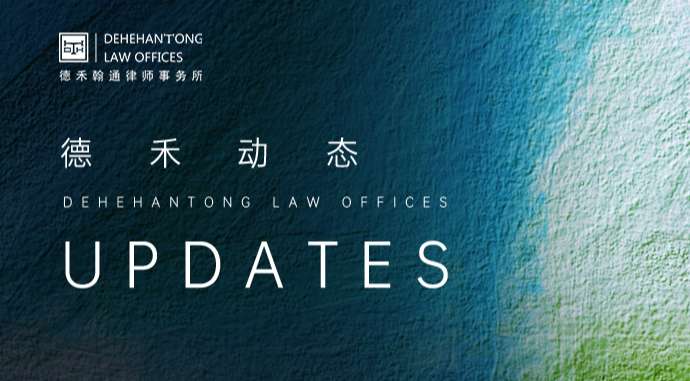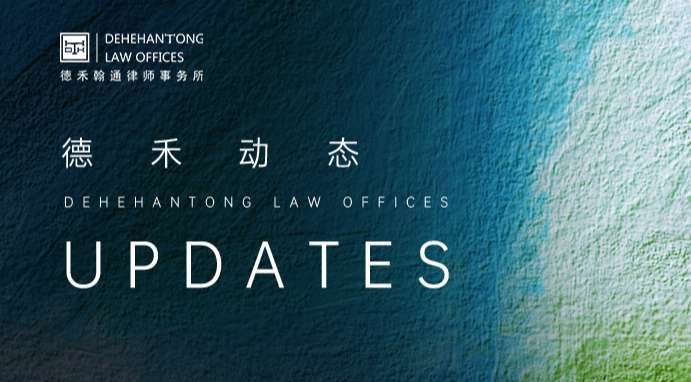Interpretation of supply chain bill ABS innovation pilot policy from the perspective of historical evolution
On November 28, 2024, the China Interbank Market Dealers Association (hereinafter referred to as the "Dealers Association") issued the "Notice on Carrying out the Innovation Pilot of Securitization of Supply Chain Bill Assets" (hereinafter referred to as the "Pilot Notice"). Jointly carry out supply chain note asset securitization pilot projects with Shanghai Securities Exchange Co., LTD. (hereinafter referred to as "the Exchange") to support small, medium and micro enterprises to revitalize bill assets, enhance the convenience of supply chain note financing, and promote the innovative development of asset securitization market.
Subsequently, the exchange issued the "Shanghai Securities Exchange Supply Chain Bill Asset Securitization Underlying Asset Operating Guidelines" (the exchange issued [2024] 83, referred to as the "Operating Guidelines") to further clarify the underlying asset operating process of supply chain bill ABS.
The following author tries to interpret the innovation pilot in combination with the history of bill assets ABS.
1. Early"channeled" bill ABS business "innovation"
This early "innovation" took place between 2011 and 2014. During this period, China's capital management scale blowout, trust, securities management, fund management and so on. At that time, the main promoter of asset management business was commercial banks, which had a large scale of credit assets on their balance sheets. In the capital adequacy ratio under the curse, banks have to seek credit assets "out of the balance sheet" or "transfer". The bill discount and rediscount that are included in the total credit assessment have the opportunity of "business innovation".
As the motive of this "innovation" is not pure, the market is constantly playing out the "cat and mouse" story between regulatory and financial institutions. For example, the bank transfers the discounted and unmatured bank acceptance bill to a specific trust plan, whose client and beneficiary are bank wealth management products or interbank funds. It is still a trust plan of pooled funds in form, and the subject matter of purchase (investment) is bill assets (discounted bank notes); In essence, it is a "regulatory arbitrage" behavior using the trust channel to escape the limit of credit scale. At the time, the CBRC stopped the practice in the form of "window guidance".
During the same period, in response to the problem of banks using bills to scale up, the regulatory authorities issued intensive documents [1], besieged and blocked, and the business "innovation" in the market was endless. It was not until the introduction of the "New Regulations on capital management"[2] in 2018, and the integration of the capital management regulatory policies of the People's Bank of China, the Banking insurance Regulatory Commission and the Securities Regulatory Commission that the regulatory arbitrage opportunities were cut off, and this culture was officially stopped.
Therefore, the so-called "innovation" of bill ABS business in the early days was fundamentally a roundabout tactic by financial institutions to make use of different regulatory policies to survive existing businesses in order to meet the requirements of different regulators. Once regulators issue a new "patch"policy or halt a business, financial institutions will still find other ways to force life.
Such "channel" innovations are not without merit. On the one hand, the regulatory authorities have gradually explored methods that accord with the actual situation of our country and solve the fundamental problem of "financing difficulty"; On the other hand, financial institutions have also accumulated a lot of business management experience.
2. Flash in the pan "standardized Notes"
In August 2019, the exchange piloted the creation of standardized bills (hereinafter referred to as "standard bills"), a total of 4 periods, with a cumulative amount of about 1.38 billion yuan. In July 2020, the People's Bank of China formally promulgated and implemented the "Measures for the Management of Standardized Bills" (Announcement of the People's Bank of China (2020) No. 6, referred to as the "Measures for Marking Bills"). A total of 58 standardized bills were created and operated in accordance with the "Marking Measures". Since 2021, the market has not issued a new ticket.
(a) Marking may no longer restart, but its creation mechanism is still commendable
As the legislative basis, the first article of the "Marking Measures" makes it clear that the "Trust Law" is one of its superior laws. In addition, the "Standardized Instrument Depository Agreement (2020 version)" drafted and issued by the National Interbank Lending Center, the invoice exchange and the Shanghai Clearing House clearly stipulates that "standardized instrument is created based on the legal relationship of trust", and "the original holder transfers the rights of the underlying asset in a complete manner by endorsements based on the trust of the depositary institution." Entrust a depositary institution to establish a standardized instrument property... The depositary does not bear the risk associated with the underlying assets.
The owner of the underlying asset prior to the creation of the token is the original bearer, and the depositary institution will endorse the collected underlying asset to the standardized instrument product in accordance with the provisions of the Depositary Agreement, and the investor will subscribe for the product. In the process of marking, the underlying assets and marking products are registered and held in custody by the clearing house and the clearing house respectively. Whether it is the Marking Method, the depositary Agreement, or the account setup in practice, the underlying assets have indeed become separate from the other property of the original bearer and the inherent property of the depositary institution.
Since the underlying assets are endorsed and transferred to standardized instrument products, it plays the effect of "true sale" and "bankruptcy isolation"in ABS.
(2) Hard damage in connection with the Negotiable Instruments Law
The standard note only borrows the trust legal structure and binding function of ABS, and is not an asset-backed security itself. The People's Bank of China made it clear that the essence of standardized bills is the further optimization and standardization of the bill trading mechanism, and the circulation of bills is carried out under the framework of relevant laws and regulations such as the "Bill Law", which is different from other assets and does not involve the classification and stratification of products.
The original bearer "deposited" the underlying asset with the depositary by endorsing the underlying asset to a standardized instrument. Although it is not discounted in nature or appearance, the technical exchange system ensures the reliability of the entire endorsement transfer process. The acquisition and transfer of instruments shall follow the principle of good faith and have a true transaction relationship and creditor's debt relationship (see Article 10 of the Negotiable Instruments Law). So, it is still doubtful whether the act of creating a mark and collecting the underlying assets is a "transaction relationship"or a "creditor's debt relationship", or how to link it up in legislative technology.
Space is limited, and other detailed views can be found in the article published by the author [3].
3. Interbank ABS came into being
In March 2023, the Association of Dealers issued Bulletin [2023] 3, which amended the original Guidance on Asset-Backed Instruments for Non-Financial Enterprises (Bulletin [2017] No. 27) and renamed it the "Rules for the Business of Securitization of Corporate Assets in the Interbank Bond Market" (the "Rules for the Business of Interbank ABS"). At the same time, the accompanying Guidance on Information Disclosure of Corporate Asset Securitization Business in the Inter-Bank Bond Market was issued (the latest revision in December 2023).
Thus, the interbank bond market enterprise asset securitization business (referred to as "interbank ABS") was officially born, and asset-backed paper (referred to as "ABN") and asset-backed commercial paper (referred to as "ABCP") businesses were reconstructed, and the two parallel and side by side together constituted the two subordinate concepts of interbank ABS.
(1) The concept of "interbank ABS" was born, redefining ABN and ABCP
The concept of "interbank ABS" corresponds to "exchange ABS", that is, enterprise asset securitization under the Securities regulatory system within the framework of the Regulations on the Management of Asset Securitization Business of Subsidiaries of Securities Companies and fund Management Companies (CSRC Announcement [2014] No. 49).
The Interbank ABS Business Rules define interbank ABS as a structured financing activity in which the cash flow generated by the underlying asset is used as the main repayment support and the issuer issues asset-backed securities of the enterprise through a specific purpose vehicle. This includes asset-backed paper (ABN), asset-backed commercial paper (ABCP), and other securitized financing instruments approved by dealers associations.
Among them, the "initiator" is the "original equity holder" in the exchange ABS. "Special Purpose Vehicle (SPV)" is consistent with the expression in exchange ABS: an SPV in interbank ABS includes a special purpose trust (SPT), a special purpose company (SPC) or other form of vehicle recognized by a dealer association; The SPV in exchange ABS refers to the asset-backed special plan specially set up by the brokerage/fund subsidiaries or other special purpose vehicles recognized by the SFC.
The new definition of ABN clearly transfers the underlying assets to the SPV and separates the underlying assets from the main body; The expression of "pay income by way of repayment of principal and interest according to the agreement", which more reflects the main body's credit, is deleted to emphasize the characteristics of asset securitization relying on asset credit.
For ABCP, it is clear that it is no longer a sub-variety of ABN, but a business type of interbank ABS parallel to ABN. Compared with ABN, ABCP can be issued on a rolling basis, and the source of repayment at maturity, in addition to the underlying asset cash flow, also includes the raising of new issues of asset-backed commercial paper or external liquidity support.
(2) Strengthening and rationalizing the basic trust relationship
Compared with the old guidance in Bulletin 27 [2017], there is a slight difference in the duties of the SPV management authority under the Interbank ABS Business Rules, that is, the new rules have deleted the word "transferable"from "managing the underlying assets of the transferee". Since there is a fiduciary legal relationship between the sponsor and the SPV in the interbank ABS business, it is more appropriate for the underlying asset to be "trusted" to the SPV rather than "transferred" to the SPV (see the definition of trust in Article 2 of the Trust Act), so it is more accurate to delete the words "transferred".
In addition, the "Inter-bank ABS Business Rules"adds the concept of duration management agency, which refers to the institution disclosed in the ABS registration and issuance document and assumes the responsibility for duration management, in principle, it should be the SPV of the current ABS or its management agency. At the same time, it specifies the responsibilities that the SPV or its management agency should perform during the existence of ABS, emphasizing its active management responsibilities.
The fiduciary relationship is fiduciary in nature, which requires the trustee to act for the benefit of the beneficiary, at least in form, the trustee's behavior is altruistic. This is different from the principle of good faith in contract law in that the latter is based on the recognition of the egoistic nature of contractual relations. In fiduciary relationship, fiduciary duties required of trustees are mainly two aspects: loyalty and careful attention.
The trustee shall handle the trust affairs in the best interests of the beneficiaries. As a fiduciary SPV management body, its duties and obligations reflect its fiduciary relationship with the sponsor, both at the creation stage and during the life of the ABS product.
4. The outpost of policy bedding and innovation pilot
In June 2023, the Dealers Association successively issued the "Notice on Matters Related to Further Improving the Quality and Efficiency of Financing Services of Debt Financing Instruments" (2023) No. 105) and the "Notice on Further Exerting the Functions of the Inter-Bank Enterprise Asset Securitization Market to Enhance the Quality and Efficiency of Serving the Development of the Real Economy" (2023). It focuses on "encouraging private small and micro enterprises, scientific and technological innovation enterprises, and high-quality asset management companies to revitalize assets such as bills, intellectual property rights, non-performing and restructured debts, explore transaction structure and model innovation, and continue to expand effective investment" (No. 105).
The Dealers Association clearly proposed to "encourage the issuance of asset securitization products with the supply chain notes of the stock exchange as the basic asset, revitalize the bill assets, and guide the bond market to increase support for private, small, medium and micro enterprises"(No. 107).
In September of the same year, Tonghui Capital supply chain Platform, a subsidiary of Shandong High-speed Group, registered the ABN product of the country's first supply chain bill in the dealers Association. Moreover, the ticketing Exchange and the Dealers Association jointly organized a symposium on securitization of supply chain paper assets.
All kinds of preparations indicate that the interbank ABS of supply chain notes as the underlying asset is about to be officially launched.
5. Formal innovation pilot of inter-bank ABS for supply chain notes
Supply chain bill is an electronic commercial bill issued by the drawer through the qualified supply chain platform, based on the supply chain scenario and real transaction relationship, on the supply chain bill platform of the invoice exchange. The underlying assets of this innovative pilot ABS are undiscounted supply chain notes or related property rights.
Supply chain bills naturally solve the basic legal relationship of bills in Article 10 of the Negotiable Instruments Law, and are highly linked to the real economy. "Not discounted" means that bank credit is not added and does not involve the motivation of early bill ABS reviewed in the first part of this article.
Therefore, with the property rights such as undiscounted bills and income rights as the basic assets, the legal relationship is clear, the transaction structure is simple, and the operation process is convenient, which can effectively improve the efficiency of product issuance, give full play to the non-causal characteristics of bills, and solve the problems such as the difficulty of trade authenticity verification in accounts receivable financing. In terms of social benefits, ticket ABS opens up the bill market and the bond market, which is conducive to expanding the bill financing channels of small and medium-sized enterprises and providing them with new options for financing.
(1) Product model and transaction structure
The originator can either directly transfer the supply chain notes to SPV as the base asset and issue ABS, or transfer the property rights such as the accounts receivable or the income right of the supply chain notes to SPV as the base asset, and pledge the supply chain notes to SPV as the underlying asset to issue ABS.
Of these two product models, the former direct model is the direction supported by the innovation pilot, but it is also compatible with the latter indirect model.
In terms of the transaction structure, the holder can directly act as the initiator, or it can entrust the supply chain platform and other subjects as the agent of the initiator and issue ABS on behalf of dispersed holders. In addition, the relevant subject can first collect the notes and then issue asset-backed securities by setting a reasonable transaction structure.
Interbank ABS can set the issuance period according to the actual demand, or adopt the circular purchase structure and rolling issuance structure according to the issuance period and the maturity of the underlying assets.
(2) The foreshadowing of the "limited recourse service" function
The author analyzed the new limited recourse service function of Ticketing exchange in the article "Opinion on the new Limited recourse Service Function of Ticketing Exchange" published on this public account on 2024/9/29, and pointed out that "this provides enough imagination space for the supply chain bill to meet the needs of multiple business scenarios in the future."
In addition, Article 19 of the "Operating Guidelines" of the exchange stipulates that if the underlying asset is marked "it is agreed that only recourse shall be made to the acceptor and its guarantor (if any)", then the sponsoring institution and SPV shall comply with the relevant provisions of the Exchange on participating in the limited recourse service of the bill. It can be seen that this innovation pilot is implementing every detail step by step.
(3) Innovations in information disclosure and duration management
The innovation pilot fully considers the characteristics of ABS's emphasis on asset credit and the degree of information disclosure obligations of each subject, and treats it differently according to the situation.
For example, the sponsor is the holder of the ticket, and only the name of each holder is required to be disclosed. However, if the issuer is not the holder of the ticket, then the issuer shall disclose the basic information, controlling shareholders and actual controllers, main business information and business operations related to the underlying assets (if any), main financial data and indicators, and each holder shall disclose the name of the enterprise.
In addition, during the duration of ABS, the SPV management agency can carry out the cyclic purchase of underlying assets, replenishment, early redemption, maturity processing, etc., according to the provisions of the ABS product agreement. This is also the performance and refinement requirements of the SPV management body (trustee) to fulfill the active management duties based on fiduciary relationship described in the third part of this paper.
Chapter 4 of the Operational Guidelines sets out the underlying asset operations of the SPV management agency during its lifetime. It changes the expression and operation mode of the standardized instrument "endorsement means the complete transfer of the rights of the underlying assets", but emphasizes the "transfer" of the underlying assets. In this way, it avoids the recurrence of the hard injury of standardized instruments in the convergence with the Negotiable Instruments Act.
For example, when ABS is issued, the originator should initiate an underlying asset transfer application to the SPV through the supply chain platform. If the ABS issuance fund is successfully raised, the SPV management agency shall agree to the transfer application, and the underlying assets shall be transferred from the initiator to the SPV; If the fund raising is not successful or the underlying assets do not meet the relevant requirements, the SPV management agency shall respond to the transfer request by returning the underlying assets.
When the underlying asset is redeemed in advance, the SPV management authority shall initiate an application for early redemption with the sponsor. If the sponsor agrees to respond to the early redemption request, the underlying asset is transferred from the SPV to the sponsor, and the sponsor shall transfer the funds corresponding to the early redemption to the custody account opened by the SPV at the fund depository bank. If the issuer refuses to respond to the early redemption application, or fails to agree or refuse to respond, the underlying assets will not be transferred.
In summary, this paper reviews the history of bill asset ABS and analyzes the product structure and arrangement in different periods. Although the bill trust was stopped in that year, although the standardized bill did not return to the stage, they have provided experience and lessons for the supply chain bill carrying the speedboat of interbank ABS to accelerate forward.
Recommended Information
-
ArticlesLegal risks and compliance practices facing the development of AI enterprises2024-12-03
-
UpdatesDehehantong X 2024 Guangzhou Magic Lamp Contemporary Art Fair: Rule of law protection, "art"peers2024-12-02
-
ArticlesInterpretation of the core terms of the investment Agreement (II) - Pre-emptive rights and anti-dilution rights2024-11-28
-
Articles《Construction Engineering Compliance Manual》——Safety production (Part 1)2024-11-27
-
UpdatesHand in hand, "1" heart to the future | the first anniversary of the establishment of Dehehantong Kunming office2024-11-26















